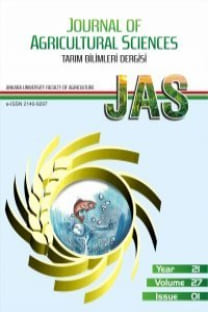Determining heat tolerance of interspecific (Cucurbita maxima x Cucurbita moschata) inbred line of squash ‘Maxchata’ and its parents through photosynthetic response
Abstract Development of heat tolerant cultivars is the need of hour to combat the challenges of global warming and food supply to increasing population. This study was conducted to determine the extent of heat tolerance of newly developed interspecific inbred line of squash named as ‘Maxchata’ through comparing its photosynthetic attributes with its parents C. maxima and C. moschata. Plants of these three cultivars were subjected to three different temperatures i.e 30°C day/ 25°C night as control, 37°C day/ 32°C night as moderate heat stress and 42°C day/ 37°C night as severe heat stress, for seven days. Results showed that various gas exchange attributes like photosynthetic rate (PN), stomatal conductance (gs) and transpiration rate (E) as well as chlorophyll florescence (Fv/Fm) all dropped significantly in the studied cultivars with increasing temperature, while intercellular CO2 concentration (Ci) increased pointing to the nonstomatal limitations. Further, chlorophyll pigments also degraded with heat shocks resulting in more Chl a to b ratio and decreased chlorophyll carotenoids ratio. However, these trends were more abrupt in C. maxima, chased by ‘Maxchata’ and then C. moschata. Hence, C. moschata had the best photosynthetic machinery to sustain the heat regimes, followed by ‘Maxchata’, while, C. maxima was the most susceptible. So, ‘Maxchata’ with some degree of heat tolerance has the ability to cope with the climate change.
Determination of Heat Tolerance of Interspecific (Cucurbita maxima x Cucurbita moschata) Inbred Line of Squash ‘Maxchata’ and Its Parents through Photosynthetic Response
Development of heat tolerant cultivars is needed to combat the challenges of global warming and food supply to increasing population. This study was conducted to determine the extent of heat tolerance of newly developed interspecific inbred line of squash named as ‘Maxchata’ through its photosynthetic attributes compared to its parents C. maxima and C. moschata. Plants of these three genotypes were subjected to three different temperatures i.e 30 °C day/25 °C night as control, 37 °C day/32 °C night as moderate heat stress and 42 °C day/37 °C night as severe heat stress, for seven days. Results showed that various gas exchange attributes such as net photosynthesis rate (PN), stomatal conductance (gs) and transpiration rate (E) as well as maximum photochemical efficiency of PSII (Fv/Fm) dropped significantly with increasing temperature, while intercellular CO2 concentration (Ci) increased showing the nonstomatal limitations. Further, chlorophyll pigments also degraded with heat shocks resulting in higher Chl a to b ratio and decreased chlorophyll to carotenoids ratio. However, these trends were more abrupt in C. maxima, chased by ‘Maxchata’ and then C. moschata. C. moschata had the best photosynthetic machinery to sustain the heat regimes, followed by ‘Maxchata’, while C. maxima was the most susceptible. Hybrid ‘Maxchata’ with some degree of heat tolerance might have ability to cope with the climate change.
